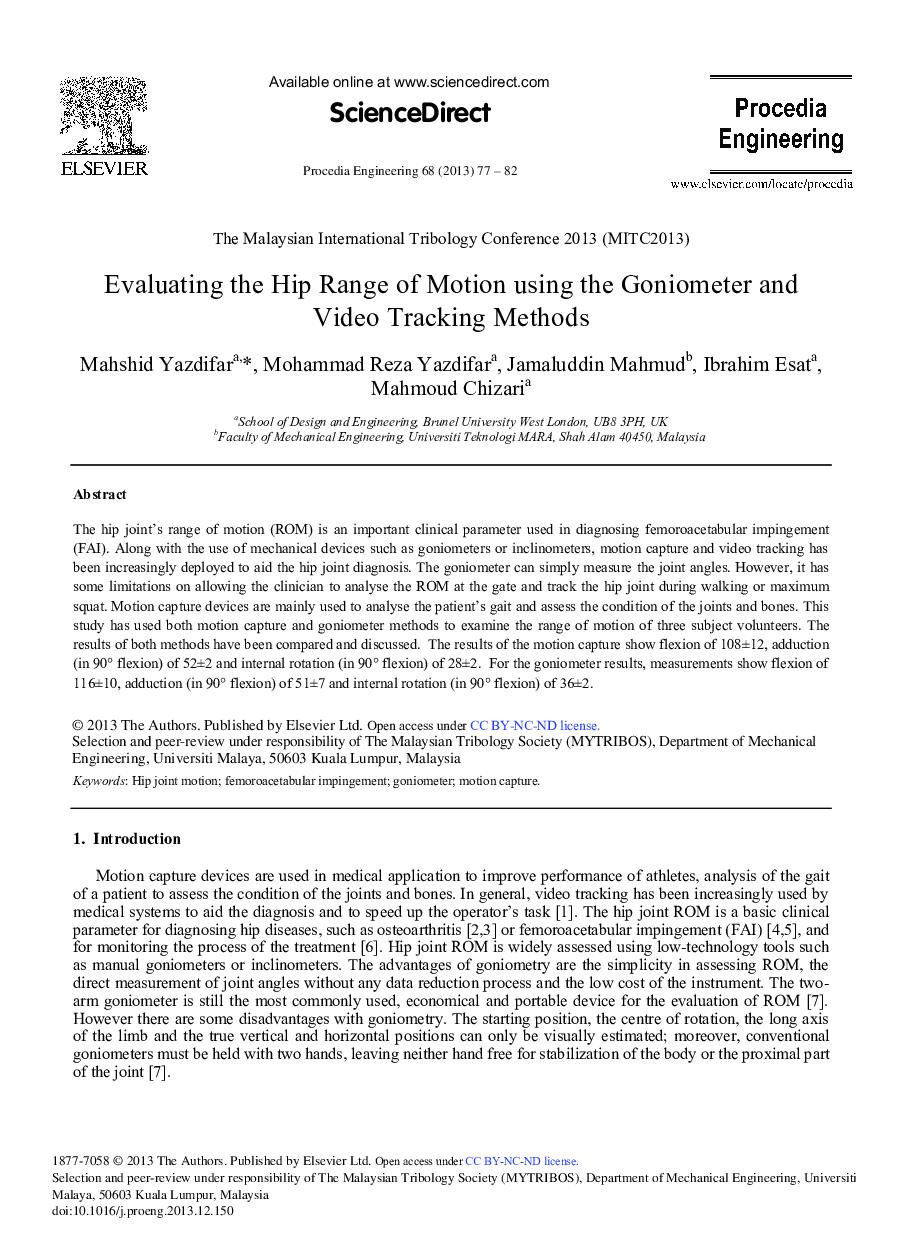| Article ID | Journal | Published Year | Pages | File Type |
|---|---|---|---|---|
| 859608 | Procedia Engineering | 2013 | 6 Pages |
The hip joint's range of motion (ROM) is an important clinical parameter used in diagnosing femoroacetabular impingement (FAI). Along with the use of mechanical devices such as goniometers or inclinometers, motion capture and video tracking has been increasingly deployed to aid the hip joint diagnosis. The goniometer can simply measure the joint angles. However, it has some limitations on allowing the clinician to analyse the ROM at the gate and track the hip joint during walking or maximum squat. Motion capture devices are mainly used to analyse the patient's gait and assess the condition of the joints and bones. This study has used both motion capture and goniometer methods to examine the range of motion of three subject volunteers. The results of both methods have been compared and discussed. The results of the motion capture show flexion of 108±12, adduction (in 90° flexion) of 52±2 and internal rotation (in 90° flexion) of 28±2. For the goniometer results, measurements show flexion of 116±10, adduction (in 90° flexion) of 51±7 and internal rotation (in 90° flexion) of 36±2.
